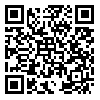BibTeX | RIS | EndNote | Medlars | ProCite | Reference Manager | RefWorks
Send citation to:
URL: http://rehabilitationj.uswr.ac.ir/article-1-706-en.html
2- Faculty of Psychology.Azad University
3- University of social welfare and rehabilitation sciences, Occupational Therapy Department
4- Exceptional Children Institution, Tehran, Iran.
5- University of Social Welfare and rehabilitation sciences, Pediatric Neurorehabilitation Research Center
Objective: The purpose of this study was to examine the effect of visual Arts education on improvement of visual perceptual skills in dyscalculic students.
Materials & Methods: utilizing an experimental pretest – posttest with control group design and using screening and via DSM-IV dyscalculia diagnosis questionnaire 30 dyscalculic male students were selected who were studying in the primary school and the research instruments used were Frostig Visual Perception and Key- mat Tests.
Results: the data of the research were analyzed through descriptive statistic method and covariance analysis model which showed that there is meaningful difference between clay, painting and control groups. .
Conclusion: the Visual Arts education can be effective on all of the visual perceptual skills in dyscalculic students except the Form Constancy skill.
Received: 24/12/2010 | Accepted: 17/04/2011 | Published: 5/01/2014
| Rights and permissions | |
 |
This work is licensed under a Creative Commons Attribution-NonCommercial 4.0 International License. |





